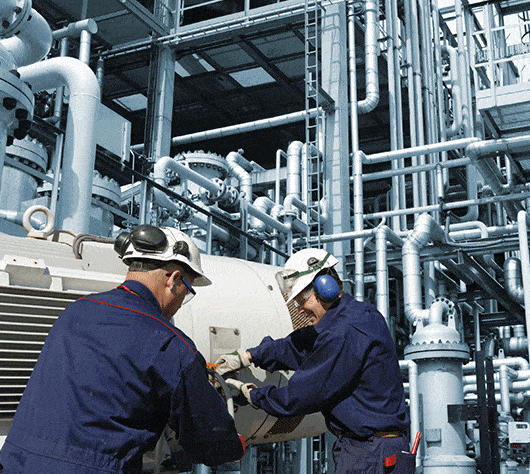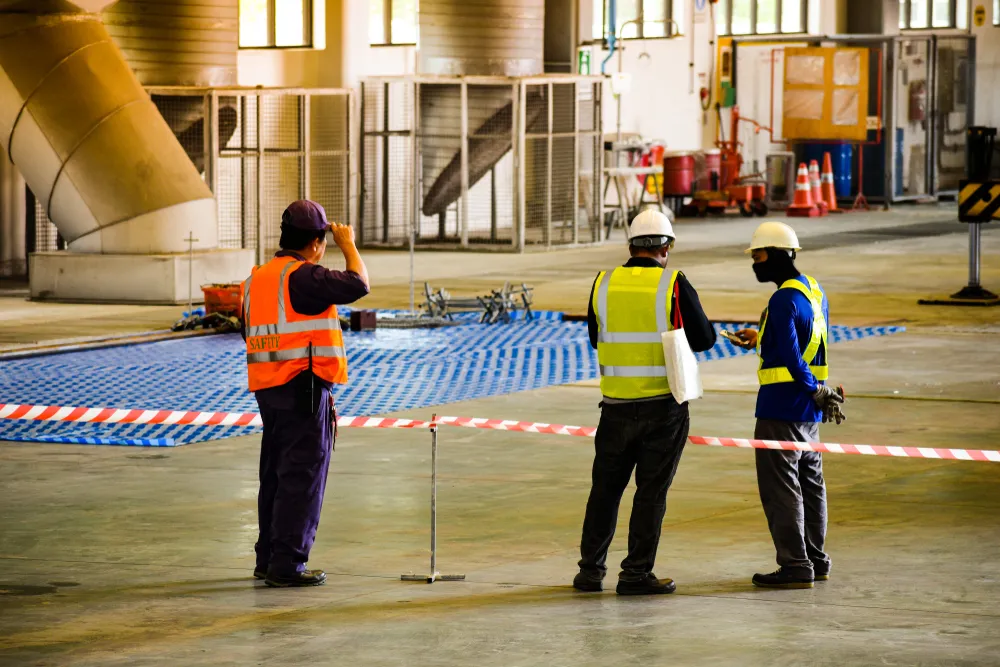How Roar Solutions can Save You Time, Stress, and Money.
How Roar Solutions can Save You Time, Stress, and Money.
Blog Article
Roar Solutions Fundamentals Explained
Table of ContentsSome Known Details About Roar Solutions The Best Strategy To Use For Roar SolutionsAn Unbiased View of Roar Solutions
In order to protect installments from a prospective surge an approach of evaluating and identifying a possibly harmful area is called for. The objective of this is to make certain the proper option and installment of equipment to eventually avoid an explosion and to guarantee security of life.
(https://www.quora.com/profile/Roarsolutions)
No equipment must be installed where the surface temperature of the tools is above the ignition temperature level of the given hazard. Below are some typical dust unsafe and their minimum ignition temperature. Coal Dirt 380C 225C Polythene 420C (melts) Methyl Cellulose 420C 320C Starch 460C 435C Flour 490C 340C Sugar 490C 460C Grain Dirt 510C 300C Phenolic Material 530C > 450C Aluminium 590C > 450C PVC 700C > 450C Soot 810C 570C The chance of the danger being existing in a concentration high adequate to trigger an ignition will differ from location to place.
In order to identify this danger an installation is separated right into locations of risk depending upon the amount of time the hazardous exists. These locations are referred to as Zones. For gases and vapours and dirts and fibres there are three areas. Zone 0 Area 20 A harmful ambience is highly most likely to be present and might be present for lengthy periods of time (> 1000 hours annually) or perhaps constantly Zone 1 Zone 21 A hazardous environment is feasible yet unlikely to be present for lengthy periods of time (> 10 450 C [842 F] A classification of T6 implies the minimal ignition temperature is > 85 C [185 F] Harmful location electrical devices perhaps made for use in higher ambient temperatures. This would showed on the score plate e.g. EExe II C T3 Ta + 60C( This means at 60C ambient T3 will certainly not be surpassed) T1 T1, T2, T3, T4, T5, T6 T2 T2, T3, T4, T5, T6 T3 T3, T4, T5, T6 T4 T4, T5, T6 T5 T5, T6 T6 T6 A T Course ranking of T1 indicates the maximum surface area temperature generated by the tool at 40 C is 450 C. Assuming the connected T Class and Temperature ranking for the tools are proper for the area, you can constantly utilize an instrument with an extra rigorous Division score than needed for the area. There isn't a clear answer to this question however. It really does rely on the kind of devices and what repair work need to be accomplished. Tools with particular test procedures that can't be executed in the area in order to achieve/maintain 3rd party score. Have to return to the manufacturing facility if it is before the tools's service. Field Repair Work By Authorised Personnel: Challenging screening may not be needed nevertheless details procedures might require to be adhered to in order for the devices to keep its 3rd party ranking. Authorised personnel must be employed to execute the work properly Repair need to be a like for like replacement. New component must be taken into consideration as a straight substitute requiring no special screening of the tools after the repair is full. Each tool with a hazardous score should be examined individually. These are laid out at a high level listed below, however, for even more detailed details, please refer directly to the guidelines.
The Greatest Guide To Roar Solutions
The equipment register is an extensive database of equipment records that consists of a minimum collection of fields to identify each product's area, technological specifications, Ex category, age, and environmental data. This information is vital for monitoring and handling the devices successfully within harmful areas. In comparison, for periodic or RBI sampling inspections, the quality will be a mix of Detailed and Close inspections. The proportion of In-depth to Shut assessments will certainly be identified by the Tools Threat, which is examined based on ignition danger (the chance of a source of ignition versus the possibility of a flammable ambience )and the hazardous location classification
( Area 0, 1, or 2). This variant will additionally affect the resourcing demands for job preparation. As soon as Whole lots are specified, you can create tasting strategies based on the example dimension of each Lot, which refers to the number of arbitrary equipment products to be inspected. To identify the needed example dimension, two elements need to be evaluated: the size of the Whole lot and the category of assessment, which shows the degree of initiative that ought to be used( decreased, normal, or increased )to the evaluation of the Lot. By combining the category of assessment with the Lot size, you can after that develop the proper being rejected standards for an example, indicating the permitted variety of faulty items located within that example. For more information on this procedure, please describe the Energy Institute Guidelines. The IEC 60079 basic recommends that the optimum interval in between assessments need to not exceed 3 years. EEHA evaluations will certainly also be carried out beyond RBI campaigns as component of set up maintenance and equipment overhauls or fixings. These examinations can be credited toward the RBI sample dimensions within the influenced Great deals. EEHA evaluations are performed to identify mistakes in electrical devices. A weighted scoring system is vital, as a single piece of equipment might have several faults, each with differing degrees of ignition threat. If the consolidated score of both assessments is less than two times the fault score, the Lot is considered acceptable. If the Whole lot is still taken into consideration inappropriate, it should undergo a full evaluation or validation, which might set off more stringent examination methods. Accepted Great deal: The root causes of any kind of faults are determined. If an usual failing setting is discovered, added devices may require maintenance. Mistakes are identified by extent( Safety, Honesty, House cleaning ), making sure that urgent concerns are assessed and dealt with immediately to mitigate any type of effect on safety and security or operations. The EEHA data source need to track and tape the lifecycle of mistakes in addition to the corrective activities taken. Executing a durable Risk-Based Assessment( RBI )approach is important for making certain conformity and safety in managing Electrical Equipment in Hazardous Locations( EEHA) (eeha certificate). Automated Fault Rating and Lifecycle Management: Easily manage mistakes and track their lifecycle to improve inspection precision. The intro of this assistance for risk-based evaluation even more reinforces Inspectivity's placement as a best-in-class option for regulative conformity, in addition to for any kind of asset-centric inspection use case. If you want finding out more, we welcome you to request a demo and discover how our remedy can transform your EEHA monitoring procedures.
Indicators on Roar Solutions You Should Know

In terms of explosive risk, an unsafe area is a setting in which an eruptive atmosphere is present (or may be expected to be present) in amounts that need special safety measures for the building, setup and usage of tools. hazardous area electrical course. In this write-up we discover the challenges encountered in the work environment, the risk control steps, and the called for expertises to work securely
It is an effect of contemporary life that we produce, store or take care of a variety of useful link gases or liquids that are regarded flammable, and a series of dirts that are deemed flammable. These substances can, in specific conditions, create explosive atmospheres and these can have major and tragic effects. Most of us are acquainted with the fire triangle get rid of any one of the 3 elements and the fire can not take place, yet what does this mean in the context of harmful locations? When breaking this down into its simplest terms it is basically: a combination of a specific quantity of launch or leak of a certain compound or material, blending with ambient oxygen, and the existence of a resource of ignition.
In the majority of instances, we can do little regarding the levels of oxygen airborne, but we can have substantial impact on resources of ignition, as an example electric equipment. Harmful locations are recorded on the dangerous area category illustration and are recognized on-site by the triangular "EX LOVER" indication. Below, among various other key info, areas are divided into three kinds relying on the threat, the possibility and period that an eruptive environment will exist; Area 0 or 20 is regarded the most harmful and Area 2 or 22 is regarded the least.
Report this page